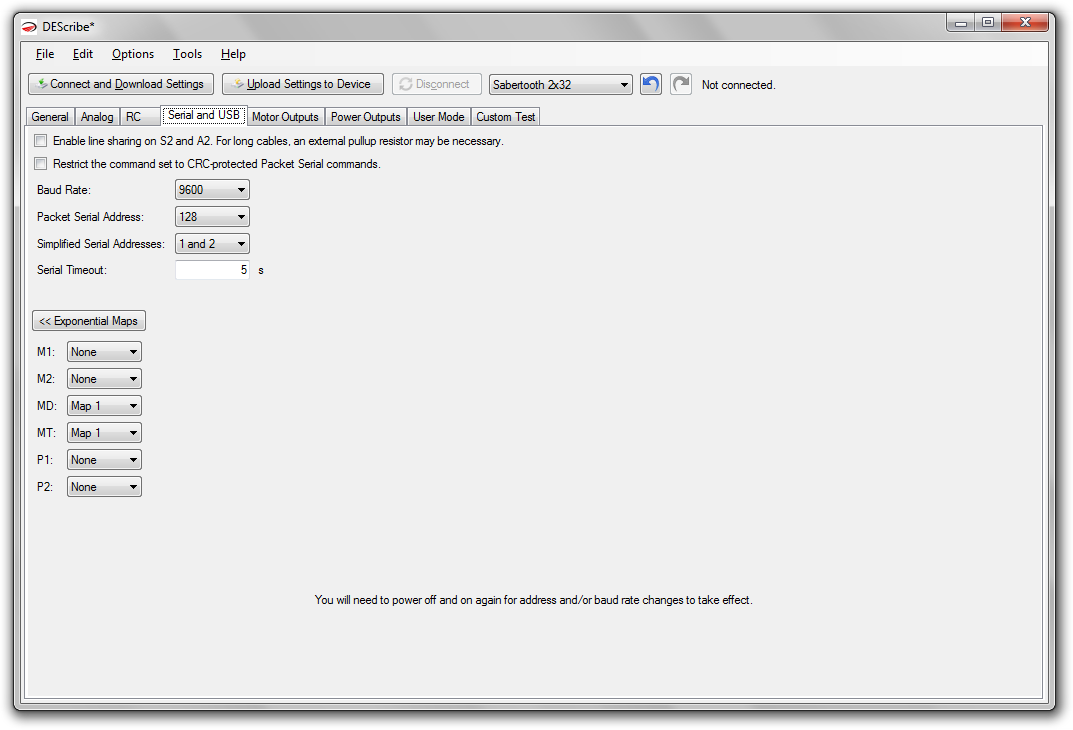
Enable line sharing on S2 and A2
When disabled, Sabertooth drives the S2 (or A2) line high when it is not sending data, to give a stronger idle signal. One consequence is that S2 (or A2) cannot be shared.
When enabled, Sabertooth will only drive S2 (or A2) when it is sending data, and will enable an internal pullup resistor when it is idle. The idle signal is weaker, but S2 (or A2) can be daisy-chained between multiple Sabertooth drivers.
Restrict the command set to CRC-protected Packet Serial commands
As far as Packet Serial data integrity goes, USB Sabertooth packets may be protected by either a 16-bit CRC or a 7-bit checksum (or no checksum in the case of Simplified Serial). If you require maximum resilience to signal corruption and need neither compatibility with non-USB SyRen/Sabertooth motor drivers nor Simplified Serial, this option lets you restrict the command set.
Baud Rate
By default, Sabertooth uses a baud rate of 9600. A faster baud rate lets you send more commands per second.
Packet Serial Address
Sabertooth's Packet Serial address. The default is 128.
In User Mode, the USB Packet Serial address may differ from this setting. See the User Mode tab.
Simplified Serial Addresses
Sabertooth's Simplified Serial addresses.
For example, if one Sabertooth has addresses 1 and 2, and another has 3 and 4, you can daisy-chain S1 between them and address them as M1, M2, M3, and M4.
Serial Timeout
The amount of time without receiving a new valid command before going into serial timeout. Physical line disconnection always causes a serial timeout.
When serial timeout occurs, the Sabertooth will stop the motor channels. A motor channel will leave serial timeout once you issue a new command to it.
Exponential Maps
Normally, exponential maps are not used in serial modes. They are useful for altering motor output without altering the program that is sending commands.